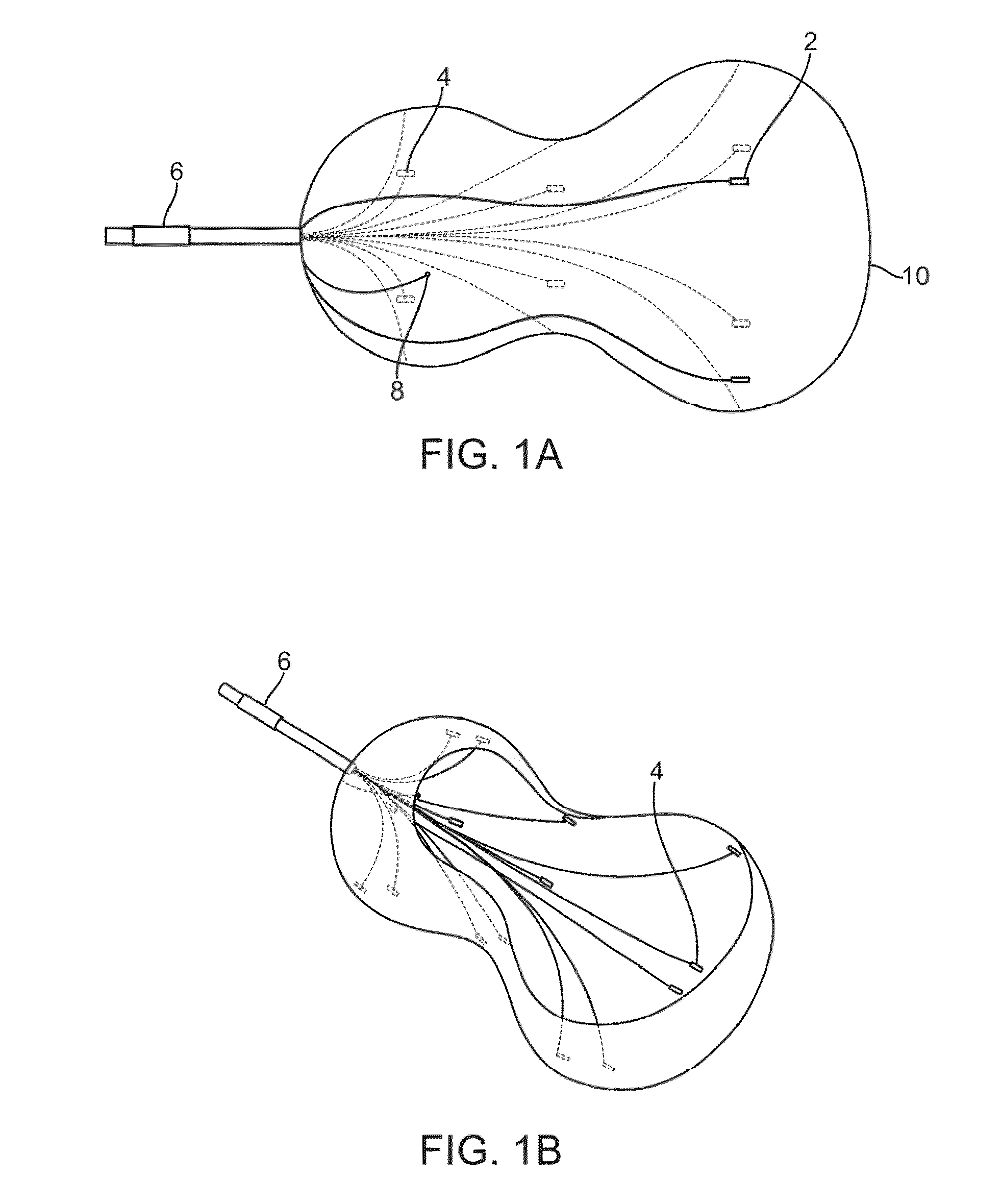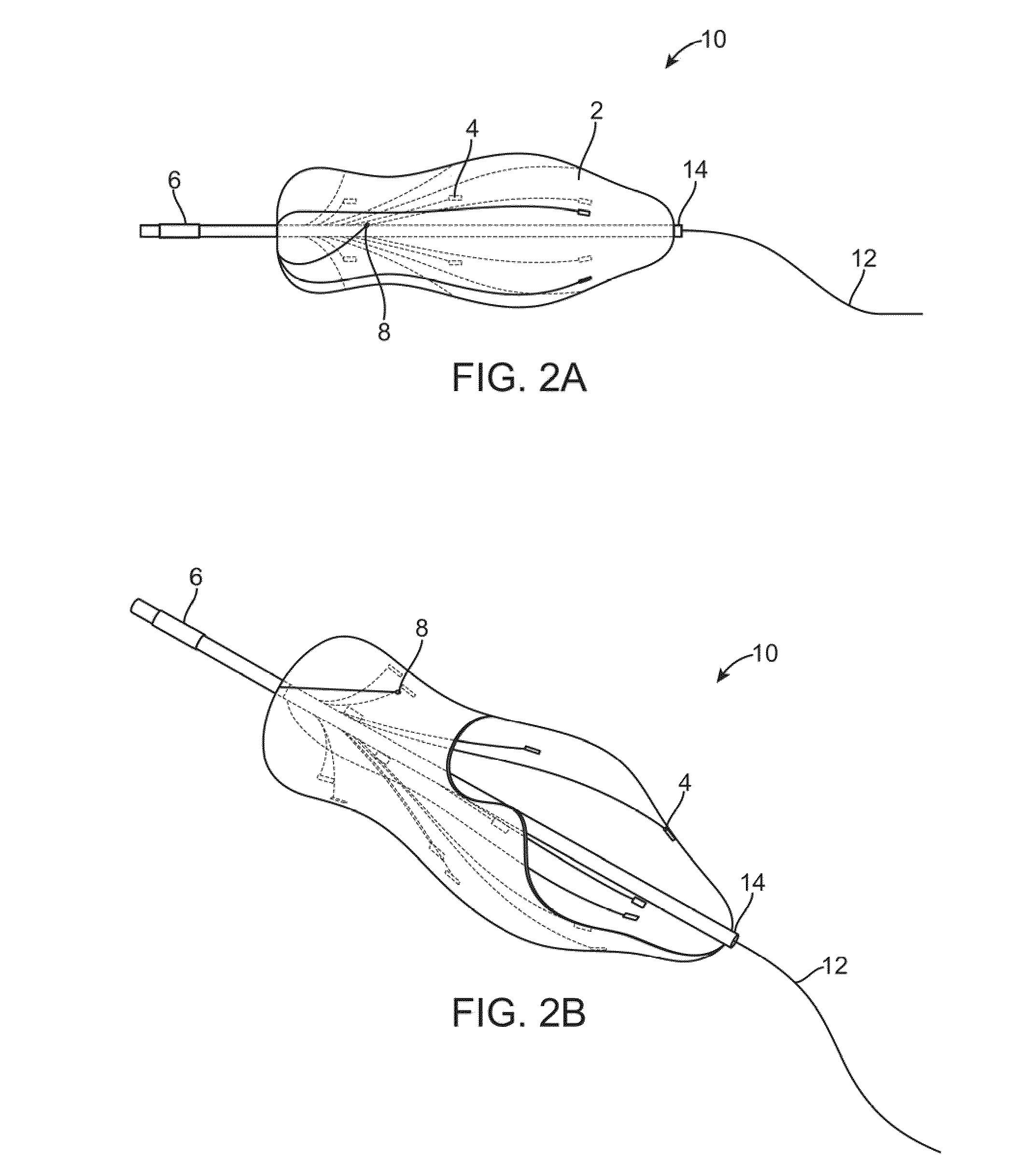Shape-sensing expandable member
a technology of expandable members and shape sensors, which is applied in the field of minimally invasive medical devices, can solve the problems of inability to characterize the space within the body, inaccurate limited use of information that is conveyed back to the practitioner, so as to minimize the undesired side effects of perennial lacerations, maintain and increase inflation, and maintain the effect of inflation control
- Summary
- Abstract
- Description
- Claims
- Application Information
AI Technical Summary
Benefits of technology
Problems solved by technology
Method used
Image
Examples
Embodiment Construction
[0043]FIGS. 1A and 1B show side and perspective views, respectively, of an expandable member 10 in its inflated state. Expandable member 10 may be made out of highly distensible elastomeric compliant material such as latex, an elastomeric block copolymer, or a thermoplastic elastomeric material, and therefore adapted to inflation with fluid or gas. The expandable member 10 can also be made out of other materials that are non-compliant, such as PET (polyethylene terpthalate), polyurethane or silicone. In this case, where the material is not expandable the member may have excess material when deflated and that material is fillable with the fluid or gas infusion medium. Expandable member 10 is generally designed to be conformable to the shape of a hollow body cavity, and will in any event occupy a three-dimensional space upon expansion. In order that the expandable member optimally sense the volume and other three-dimensional characteristics of the space within a target region of the b...
PUM
 Login to View More
Login to View More Abstract
Description
Claims
Application Information
 Login to View More
Login to View More - R&D
- Intellectual Property
- Life Sciences
- Materials
- Tech Scout
- Unparalleled Data Quality
- Higher Quality Content
- 60% Fewer Hallucinations
Browse by: Latest US Patents, China's latest patents, Technical Efficacy Thesaurus, Application Domain, Technology Topic, Popular Technical Reports.
© 2025 PatSnap. All rights reserved.Legal|Privacy policy|Modern Slavery Act Transparency Statement|Sitemap|About US| Contact US: help@patsnap.com



